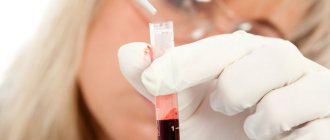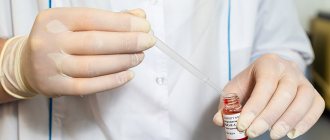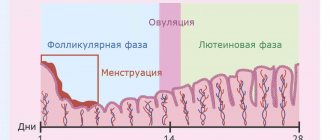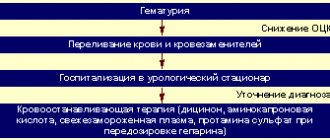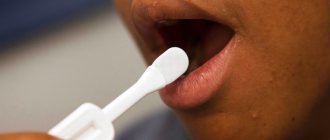An analysis for immunoglobulins G to the spike (S) protein of SARS CoV-2 allows you to determine the level of immune protection to the virus. It is advisable to perform such a study after vaccination.
In connection with the spread of coronavirus infection COVID-19, special attention is paid not only to treatment, but also to timely detection. Most medical institutions began testing using the PCR (polymerase chain reaction) method. It is aimed at identifying viral RNA in the epithelium of the upper respiratory tract. That is, if a person has already had a coronavirus infection, the PCR result will be negative.
Further, the diagnosis of COVID-19 began to be carried out using enzyme-linked immunosorbent assay (ELISA). Unlike PCR, ELISA allows you to detect specific antibodies in the blood. This implies one important advantage of the method. With its help, you can identify not only active forms of the disease, but also determine whether a person has had coronavirus or not.
Detailed description of the study
Immunoglobulins (Ig, antibodies) are serum proteins that are factors of humoral immunity. This subtype of the immune system protects the human body from various extracellular microorganisms (mainly bacteria, helminths) and their toxins.
Immunoglobulins have a general structural plan, but differ from each other in some structural areas. Based on this, five classes of immunoglobulins are distinguished: M (IgM), G (IgG), A (IgA), E (IgE) and D (IgD). This laboratory test is aimed at determining the concentration of immunoglobulins IgA, IgM and IgG in the blood.
IgA immunoglobulins are predominantly present in the secretions of glandular organs: saliva, digestive juice, secretions of the nasal mucosa and mammary gland. In the blood, the content of these antibodies is limited to 10-15% of the total amount of all immunoglobulins.
One of the key functions of class A immunoglobulins is the body's first line of defense on mucosal surfaces. IgA prevents the penetration of various microorganisms and their waste products. Although IgA does not have bactericidal activity, it plays an important role in neutralizing bacterial toxins. It is also known that immunoglobulins A are widely represented in colostrum (breast milk) and can provide specific immune protection for the newborn against various infections.
Class M immunoglobulins have a complex structure and the highest molecular weight. In this regard, IgM antibodies cannot be transmitted (through the placental barrier) from the mother’s body to the fetus during pregnancy.
IgM perform one of the leading functions in immune defense; they are the earliest antibodies that are produced in response to foreign molecules (antigens). Immunoglobulins M can participate in the neutralization of antigens independently, as well as as part of a complex immune complex - the complement system. The greatest activity of IgM is manifested against many bacteria - pathogens of pneumonia, meningitis, Haemophilus influenzae and others.
IgG antibodies are the dominant class in terms of the number of molecules in blood serum - they account for 75-80% of all immunoglobulins. IgG is predominantly produced after IgM antibodies during the secondary immune response (when a foreign molecule enters the body again). This property determines one of the features of IgG - these antibodies contribute to the long-term immune protection of the body from various bacteria, viruses, helminths, protozoa and their metabolic products.
Due to their small size, IgG are the only immunoglobulins that can cross the placental barrier during pregnancy. They are considered the main antibodies that provide immunity to a newborn baby during the first 3-6 months of his life.
The main pathologies with immunoglobulins of classes A, M and G are associated with a violation of their quantity. The lack of these antibodies is often associated with immunodeficiency, which can have various origins. Deficiency of IgA, IgM and IgG may be accompanied by the appearance or exacerbation of infectious diseases (respiratory tract, ENT organs, etc.); autoimmune (rheumatoid arthritis, systemic lupus erythematosus, etc.) and allergic pathologies (rhinitis, asthma, etc.).
The causes of excess antibodies of the IgA, IgM and IgG classes are most often acute or recurrent inflammatory diseases (infectious and non-infectious nature), as well as oncohematological pathologies associated with tumor degeneration of B-lymphocytes and uncontrolled formation of immunoglobulins of one or more classes.
This laboratory test is recommended for patients to assess the humoral part of the immune system as part of the diagnosis of (acute/chronic) infectious, autoimmune, hematological and oncological diseases, as well as immunodeficiency states. In the Hemotest laboratory you can also additionally undergo a comprehensive study of humoral immunity.
A detailed description of the studies and reference values are presented on the pages with descriptions of individual studies.
Linked immunosorbent assay
Enzyme-linked immunosorbent assay (ELISA) is one of the types of immunochemical analysis. It is based on a highly specific immunological reaction of an antigen (AG) with a corresponding antibody (AT) with the formation of an immune complex. In this case, one of the components is conjugated to the enzyme. As a result of the reaction of the enzyme with a chromogenic substrate, a colored product is formed, the amount of which can be determined spectrophotometrically.
Any version of ELISA contains 3 mandatory stages :
- The stage of recognition of the test compound by a specific antibody;
- The stage of forming the connection of the conjugate with the immune complex or with free binding sites;
- The stage of converting the enzyme label into a recorded signal.
The reaction involves:
- Solid phase;
- AG and AT;
- Conjugate (antigen or antibody labeled with an enzyme);
- Enzyme marker;
- Substrate;
- Stop reagent (sulfuric acid is most often used).
Solid phase
Various materials can be used as a solid phase for ELISA: polystyrene, polyvinyl chloride, polypropylene and others. The solid phase can be the walls of a test tube, 96-well and other plates, balls, beads, as well as nitrocellulose and other membranes that actively absorb proteins.
Antigens and antibodies
AG and AT used in ELISA must be highly purified and highly active. Ags must have high antigenicity, optimal density and number of antigenic determinants. The sensitivity of ELISA depends on the concentration, activity and specificity of the antibodies used. The antibodies used can be poly- or monoclonal, of different classes (IgG or IgM) and subclass (IgG1, IgG2). The sensitivity and specificity of the method increases when using monoclonal antibodies. In this case, it becomes possible to detect low concentrations of Ag (AT) in samples.
Enzyme markers: the most widely used are horseradish peroxidase (HRP), alkaline phosphatase (ALP) and β-D-galactosidase.
Substrates
The choice of substrate is primarily determined by the enzyme used as a label, since the enzyme-substrate reaction is highly specific.
- For HRP, 3,3',5,5'-tetramethylbenzidine (TMB chromogen) is used as a substrate. A color reaction occurs, the intensity of which depends on the amount of bound analyte;
- For ALP the substrate is 4-nitrophenyl phosphate;
- β-D-galactosidase catalyzes the hydrolysis of lactose to form glucose and galactose.
ELISA classification
The classification of ELISA methods is based on several approaches:
1 — by type of reagents present at the first stage of ELISA:
- In competitive ELISA, at the first stage, the system contains both the analyzed compound and its analogue, labeled with an enzyme and competing for specific binding sites with it;
- Non-competitive methods are characterized by the presence at the first stage of only the analyzed compound and binding sites specific to it.
2 — according to the principle of determining the test substance:
- Direct determination of the concentration of a substance (AG or AT). Antibodies to the test substance combined with a specific label are used. In this case, the label will be located in the formed specific AG-AT complex. The concentration of the analyte will be directly proportional to the recorded signal;
- Indirect determination of the concentration of a substance is based on the difference in the total number of binding sites and the remaining free binding sites. In this case, the concentration of the analyte will increase, and the recorded signal will decrease; therefore, in this case there is an inverse dependence on the magnitude of the recorded signal.
3 — by type of results:
- Quantitative;
- Semi-quantitative;
- Qualitative.
Competitive ELISA
- Specific monoclonal antibodies are immobilized on the solid phase;
- An antigen labeled with an enzyme and the test sample are added to the wells of the panels in a known concentration. In parallel, positive and negative controls are placed in adjacent wells. To construct the calibration, a standard unlabeled antigen in various dilutions is used. Incubation and washing are carried out;
- Add the substrate, incubate, stop the reaction when optimal staining develops in the positive control wells;
- The results are recorded on an ELISA reader. The concentration of the analyte is inversely proportional to the optical density.
Competitive ELISA for the determination of antibodies: the desired antibodies and enzyme-labeled antibodies compete with each other for antigens adsorbed on the solid phase.
Non-competitive “sandwich” - ELISA option
The main advantage of the method is its high sensitivity, which exceeds the capabilities of other ELISA schemes.
- Monoclonal antibodies or affinity-purified polyclonal antibodies are immobilized on the solid phase;
- The test sample is added to the wells of the panels, and a positive control sample and a negative control sample in various dilutions are placed in parallel. Incubate and wash;
- Enzyme-labeled monoclonal or polyclonal antibodies—conjugate—are added to the wells. After incubation, washing is carried out to remove unbound antibodies;
- The substrate is added and incubated. The reaction is stopped when optimal staining is achieved in the positive control wells;
- The results are recorded on an ELISA reader. The concentration of the analyte is directly proportional to the optical density.
Qualitative analysis is often used in screening studies and diagnosis of infectious diseases. The result of the study is determined by comparing its optical density with the calculated value of the critical optical density (OPcrit., “Cut-off”).
The formula for calculating “Cut-off” is indicated in the instructions for the test system. The “Cut-off” calculation can involve both the averaged values of the optical densities of positive and negative controls, as well as the optical density of a special control sample—cut level control. If the optical density of the sample is higher than the Cut-off, the sample is considered positive for specific antibodies.
For the semi-quantitative version of the technique, the ratio between the average optical density of the sample and the Cut-off optical density is calculated.
Samples are considered as:
- positive if the ratio is more than 1.1;
- doubtful if the ratio is 0.9–1.1;
- negative if the ratio is less than 0.9.
Doubtful test results cannot be unambiguously interpreted, and to clarify the result, it is necessary to repeat the examination after 1–2 weeks.
The ELISA method determines:
- Hormones;
- Tumor markers;
- Antibodies (IgG, IgM) to pathogens - ToRCH infections, tuberculosis, syphilis, hepatitis C virus (HCV antibody), mycoplasma, chlamydia, giardia, Helicobacter pylori, etc.;
- Antigens of viruses - hepatitis D, E, A (HD, HEV, HAV), hepatitis C (HCVcore), hepatitis B (HBs, HBe HBcore);
- Autoimmune diseases.
Sources:
- Lectures on laboratory diagnostics, Siberian State Medical University, 2015;
- https://www.bosterbio.com/protocol-and-troubleshooting/elisa-principle.
What else is prescribed with this study?
Humoral immunity (immunoglobulins IgA, IgM, IgG, IgE, circulating immunocomplexes, complement components C3, C4)
17.51. Ven. blood 8 days
3,890 ₽ Add to cart
Immune status (screening) (Phagocytic activity of leukocytes, cellular immunity, total immunoglobulin IgE, immunoglobulins IgA, IgM, IgG)
27.960. Ven. blood 3 days
7,640 ₽ Add to cart
Total immunoglobulin IgE
17.2. Ven. blood 1 day
670 ₽ Add to cart
Cellular immunity (T-lymphocytes, T-helpers, T-cytotoxic cells, Immunoregulatory index, B-lymphocytes, NK-T cells, NK cells, Leukocyte formula)
17.50. Ven. blood 3 days
5 200 ₽ Add to cart
Serum paraprotein typing using immunofixation
50.28.2181 Ven. blood 14 days
3,720 ₽ Add to cart
Cost of the study
The ProfMedLab clinic offers several types of tests for antibodies to COVID-19:
- Quantitative determination of class G immunoglobulins. The analysis allows you to understand whether a person has had a coronavirus infection or not. The material for the study is venous blood. Deadlines - 24 hours.
- Quantitative determination of immunoglobulins class G and M. We recommend combining it with PCR in order to obtain the most objective information. The material for the study is venous blood. Time frame: 2–3 days.
- Rapid test SARS-CoV-2 Antibody Test. You can do it yourself at home or in our clinic, and then consult a doctor. The material for the study is capillary blood (from a finger). The result will be ready in 20 minutes.
The research preparation period is from 1 day from the moment of material collection. Prices for these and other types of analyzes are presented in the table:
| Name of service | Type of analysis | Research price, rub. |
| Determination of RNA coronavirus SARS-CoV-2, quality delivery time - 2 days | PCR, smear | 1800 |
| IgG antibodies to coronavirus infection SARS-CoV-2 | ELISA, blood | from 1200 |
| IgM antibodies to coronavirus infection SARS-CoV-2 | ELISA, blood | from 1200 |
| Antibodies IgM+ IGg to coronavirus infection SARS-CoV-2 (complex) | ELISA, blood | from 2200 |
| CORONAVIRUS SARS CoV-2, RNA, delivery time 2-3 days | PCR, smear | 2200 |
| Determination of SARS-CoV-2 coronavirus RNA, quality. Russian language. urgent | PCR, smear | from 2200 |
| Determination of SARS-CoV-2 coronavirus RNA, quality. English. urgent | PCR, smear | 3000 |
| Rapid test for COVID-19, IgG, IgM (panel) | ELISA, blood | 2900 |
| PCR analysis for coronavirus infection SARS-Co-V-2 + home visit of the Central Administrative District | PCR, smear | 3500 |
| PCR analysis for coronavirus infection SARS-Co-V-2 + home visit within the Moscow Ring Road | PCR, smear | 5500 |
| PCR analysis for coronavirus infection SARS-Co-V-2 + travel up to 35 km from the Moscow Ring Road | PCR, smear | 7000 |
| Determination of IgG antibodies to coronavirus infection SARS-Co-V-2 - departure for up to 10 people | ELISA, blood | 3900 |
| Determination of IgG antibodies to coronavirus infection SARS-Co-V-2 - departure of 10-30 people | ELISA, blood | 3500 |
| Determination of IgG antibodies to coronavirus infection SARS-Co-V-2 - departure of 30-75 people | ELISA, blood | 3200 |
| Determination of IgG antibodies to coronavirus infection SARS-Co-V-2 - departure of 75-150 people | ELISA, blood | 3000 |
| IgG antibodies to coronavirus SARS CoV 2, spike (S) protein (after vaccination or previous COVID-19) | blood | 1300 |
References
- Encyclopedia of clinical laboratory tests / ed. WELL. Titsa. - M.: Labinform, 1997. - P. 213-215, 223-226.
- JVaillant, A., Jamal, Z., Ramphul, K. Immunoglobulin. In: StatPearls, 2021.
- Sathe, A., Cusick, J. Biochemistry, Immunoglobulin M. StatPearls Publishing, 2021.
- Histology (introduction to pathology) / ed. E.G. Ulumbekova, Yu.A. Chelysheva. - M.: GEOTAR-Media, 1997. - P. 528 – 530.
- Kumar, V., Abbas, A., Fausto, N. et al. Robbins and Cotran Pathologic Basis of Disease, 2014. - 1464 p.
Various classes of antibodies IgG, IgM, IgA
Enzyme immunoassay determines infectious antibodies belonging to various Ig classes (G, A, M). Antibodies to the virus, in the presence of infection, are detected at a very early stage, which ensures effective diagnosis and control of the disease. The most common methods for diagnosing infections are tests for IgM class antibodies (acute phase of infection) and IgG class antibodies (sustained immunity to infection). These antibodies are detected for most infections.
However, one of the most common tests - hospital screening (tests for HIV, syphilis and hepatitis B and C) does not differentiate the type of antibodies, since the presence of antibodies to the viruses of these infections automatically assumes a chronic course of the disease and is a contraindication, for example, for serious surgical interventions. Therefore, it is important to refute or confirm the diagnosis.
A detailed diagnosis of the type and amount of antibodies for a diagnosed disease can be done by taking an analysis for each specific infection and type of antibodies. Primary infection is detected when a diagnostically significant level of IgM antibodies is detected in a blood sample or a significant increase in the number of IgA or IgG antibodies in paired sera taken at an interval of 1-4 weeks.
Reinfection, or repeated infection, is detected by a rapid rise in the level of IgA or IgG antibodies. IgA antibodies have higher concentrations in older patients and are more accurate in diagnosing ongoing infection in adults.
A past infection in the blood is defined as elevated IgG antibodies without an increase in their concentration in paired samples taken at an interval of 2 weeks. In this case, there are no antibodies of classes IgM and A.
IgG antibodies
The main role of IgG antibodies is the long-term protection of the body from most bacteria and viruses - although their production occurs more slowly, the response to an antigenic stimulus remains more stable than that of IgM class antibodies.
Levels of IgG antibodies rise more slowly (15-20 days after the onset of illness) than IgM antibodies, but remain elevated longer, so they may indicate a long-standing infection in the absence of IgM antibodies. IgG may remain at low levels for many years, but upon repeated exposure to the same antigen, IgG antibody levels rise rapidly.
For a complete diagnostic picture, it is necessary to determine IgA and IgG antibodies simultaneously. If the IgA result is unclear, confirmation is carried out by determining IgM. In case of a positive result and for an accurate diagnosis, a second test, done 8-14 days after the first, should be checked in parallel to determine the increase in IgG concentration. The results of the analysis must be interpreted in conjunction with information obtained in other diagnostic procedures.
IgG antibodies, in particular, are used to diagnose Helicobacter pylori, one of the causes of ulcers and gastritis.
Total antibodies to Treponema pallidum: explanation
A positive reaction to antibodies to Treponema pallidum indicates different clinical stages of syphilis (primary, secondary, latent). Also, a positive test result for total antibodies to Treponema pallidum may persist for some time after a course of treatment for syphilis (“serological scar”).
The test result is negative in the absence of infection or early primary syphilis.
The test for total antibodies to Treponema pallidum may have an equivocal result. Then a repeat analysis for total antibodies is carried out a couple of weeks later.
Antibody analysis in the diagnosis of TORCH infections
The abbreviation TORCH appeared in the 70s of the last century, and consists of capital letters of the Latin names of a group of infections, the distinctive feature of which is that, while relatively safe for children and adults, TORCH infections during pregnancy pose an extreme danger.
The blood test for TORCH infection is a comprehensive study, it includes 8 tests:
— Determination of antibodies to herpes simplex virus type 1,2 IgM and IgG
— Determination of antibodies to cytomegalovirus IgM and IgG
— Determination of antibodies to the rubella virus IgM and IgG
— Determination of antibodies to Toxoplasma gondii IgM and IgG
Often, infection of a woman with TORCH complex infections during pregnancy (the presence of only IgM antibodies in the blood) is an indication for termination.
IgM antibodies
Their concentration increases soon after the disease. IgM antibodies are detected as early as 5 days after onset and reach a peak between one and four weeks, then decline to diagnostically insignificant levels over several months, even without treatment. However, for a complete diagnosis, determining only class M antibodies is not enough: the absence of this class of antibodies does not indicate the absence of the disease. There is no acute form of the disease, but it may be chronic.
IgM antibodies are of great importance in the diagnosis of hepatitis A and childhood infections (rubella, whooping cough, chickenpox), easily transmitted by airborne droplets, since it is important to identify the disease as early as possible and isolate the sick person.
Preparing for the test:
No special preparation is required (donating blood on an empty stomach is not necessary, you can smoke). A coronavirus test can be taken during the day, no earlier than 3 hours after eating. A person who takes tests to determine the presence of antibodies to the Covid-19 coronavirus should not have clinical manifestations of an infectious disease: fever, cough, runny nose, muscle pain. If symptoms of Covid-19 are detected, we ask you to inform the administrator before visiting the clinic and taking the test. Analysis is not taken if the patient is in self-isolation due to illness.
Decoding the test for syphilis RPR
A positive test reaction usually appears 3-5 weeks after infection or a week after the appearance of the primary chancre on the body.
The test can also be positive within a year after syphilis has been cured and in some other diseases (antiphospholipid syndrome). When performing an analysis over time, the titer of RPR antibodies decreases. With complete cure of syphilis, the RPR analysis becomes negative in 98% of cases.
If the RPR test for syphilis is positive for the first time, the next step to confirm the infection is to test for total antibodies to Treponema pallidum.
A false positive test result can be found in pregnancy, tuberculosis, oncology, diabetes mellitus, gout, pneumonia and autoimmune diseases, as well as in the presence of other types of treponemas in the body, drug addiction, viral hepatitis, etc.
A negative test result cannot completely exclude late tertiary and early primary syphilis.

